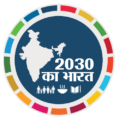In our quest to achieve the ambitious Sustainable Development Goals (SDGs) by 2030, India has emerged as a prominent player on the global stage. The SDGs, often referred to as the Agenda 2030, encompass a comprehensive set of 17 goals aimed at addressing various global challenges, from eradicating poverty to combating climate change. While India’s efforts on a national scale are commendable, it’s crucial to delve deeper into the progress made by individual states in the country. In this article, we will shine a spotlight on some of the Indian states that have made remarkable strides towards achieving the SDGs.
Kerala – Pioneering in Quality Education (SDG 4)
Kerala, often touted as “God’s Own Country,” has made substantial progress in ensuring inclusive and quality education, as outlined in SDG 4. The state’s literacy rate stands at an impressive 96.2%, significantly higher than the national average. Kerala’s commitment to education is reflected in its well-established public schooling system and high enrolment rates, particularly among girls.
Gujarat – A Beacon of Economic Growth (SDG 8)
Gujarat, a state known for its entrepreneurial spirit, has become a shining example of economic growth and decent work (SDG 8). The state’s consistent efforts to create a business-friendly environment have resulted in increased industrialization and job opportunities. Gujarat’s thriving manufacturing sector, represented by cities like Ahmedabad and Surat, contributes significantly to the nation’s economic progress.
Tamil Nadu – Leading the Way in Healthcare (SDG 3)
Tamil Nadu has set an exemplary standard in achieving good health and well-being (SDG 3). The state’s robust healthcare infrastructure, including renowned institutions like the Apollo Hospitals, has played a pivotal role in providing accessible and quality healthcare services to its citizens. Additionally, Tamil Nadu’s proactive approach to combating diseases such as COVID-19 has garnered praise both nationally and internationally.
Odisha – Empowering Women and Girls (SDG 5)
Empowering women and girls is a cornerstone of sustainable development, as emphasized in SDG 5. Odisha has made significant strides in this direction through various initiatives, including the Mission Shakti program. This program focuses on women’s self-help groups, providing them with financial support and training, thereby enhancing their socio-economic status and promoting gender equality.
Himachal Pradesh – A Model for Environmental Sustainability (SDG 13)
Addressing climate change and environmental sustainability, as laid out in SDG 13, is a global imperative. Himachal Pradesh, with its pristine landscapes and commitment to eco-friendly practices, has become a model state in this regard. The state’s efforts in promoting renewable energy sources, forest conservation, and sustainable tourism have not only reduced carbon emissions but also set an inspiring example for other regions.
Punjab – Ensuring Food Security (SDG 2)
Food security is a fundamental goal, and Punjab has been at the forefront of ensuring access to safe, nutritious, and sufficient food (SDG 2). Often referred to as the “Granary of India,” Punjab’s agricultural prowess has significantly contributed to the nation’s food production. The Green Revolution, which began here in the 1960s, revolutionized farming practices and led to increased crop yields.
Andhra Pradesh – Harnessing Technology for Innovation (SDG 9)
Innovation and infrastructure development, as highlighted in SDG 9, are critical for sustainable progress. Andhra Pradesh has embraced technology-driven initiatives, such as the “Real Time Governance” program, which uses data analytics and AI to improve public services and governance. This innovative approach has not only enhanced efficiency but also serves as a model for other states.
Rajasthan – Access to Clean Water and Sanitation (SDG 6)
Access to clean water and sanitation, a crucial aspect of sustainable development (SDG 6), has seen remarkable improvements in Rajasthan. The state’s Jal Swavlamban Yojana, aimed at water conservation and management, has transformed arid regions into oases of sustainability. Additionally, Rajasthan’s commitment to improving sanitation facilities has positively impacted public health.
West Bengal – Reducing Inequalities (SDG 10)
Reducing inequalities within and among states is a primary objective of the SDGs (SDG 10). West Bengal’s social welfare programs, such as the Kanyashree Prakalpa and Sabooj Sathi, have focused on uplifting marginalized communities, particularly women and children. These initiatives have contributed to a more equitable society.
Conclusion
India’s progress towards achieving the Sustainable Development Goals is not only a national endeavor but also a state-driven journey. While these are just a few examples, every Indian state is actively contributing to the nation’s collective efforts to meet the SDGs by 2030. As we continue to monitor and assess progress, it becomes evident that cooperation between states and a shared commitment to sustainable development are essential for building a brighter and more equitable future for all.
In conclusion, the remarkable progress made by states like Kerala, Gujarat, Tamil Nadu, Odisha, Himachal Pradesh, Punjab, Andhra Pradesh, Rajasthan, and West Bengal is a testament to the nation’s resolve to leave no one behind on the path to achieving the Sustainable Development Goals.

